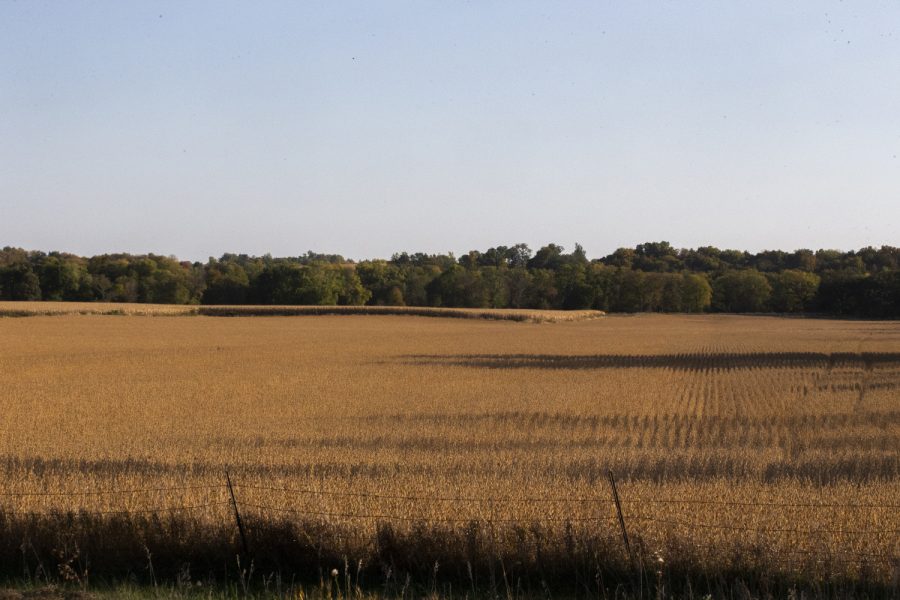Johnson County to create village in the western part of the county
Windham Village, which is still in its proposal phase, will help the proposed area with growth opportunities while maintaining its historic character.
A view of the proposed land for Windham Village in Oxford, Iowa.
October 13, 2022
The Johnson County Planning, Development, and Sustainability Department are in the midst of turning the unincorporated community of Windham into a village.
The location of Windham Village, according to a proposal released by the department on Sept. 29, is to the West of Iowa City, “about halfway between the villages of Cosgrove to the north and Frytown to the south.”
RELATED: Sups reviews village plan for Joetown
Villages are not cities or towns, but rather unincorporated areas in counties. Lucie Laurian, a professor and director of the University of Iowa School of Planning and Public Affairs, explained the difference to The Daily Iowan.
“The county has cities that are incorporated and unincorporated areas. Most of them are mainly agricultural or agricultural only,” Laurian said. “A village will have a little bit of commercial, or a small concentration of homes closer to each other and smaller parcels, but they’re still unincorporated. They are just little rural centers.”
Windham will be the ninth village created by the county. The nine places chosen to be villages were picked because they had historical significance, Nate Mueller, assistant director of the county Planning, Development, and Sustainability Department, said.
“Historic villages are areas that have typically been places of regional importance in the past but were never actually incorporated into a legal city. Historically, these were places that had maybe a church or a post office, schoolhouse, maybe a corner store or something like that,” Mueller said.
In the case of Windham, the village dates back to 1838. During its history, the area had a postmaster, school, church, flour mill, and a family owned grocery store. Currently, there is a restaurant called Renee’s Roadhouse operating in the area.
The purpose of villages, Mueller said, is to allow for growth. The growth depends on the residents and what they want to do, but it must maintain the village’s historic character.
Mueller also explained that villages do not raise the taxes of the area, nor does it change who owns the land. It’s solely for the purpose of aiding growth through development.
Although Windham was identified as a village in 2019, delays caused by the pandemic meant the process did not start until this summer. Meetings were held between the county Planning, Development, and Sustainability Department and the public in June, and a second meeting was held in August. During the meetings, the department’s staff explained what a village is, how it’s created, and took feedback from the public on the plan.
The first draft of the proposal was released Sept. 29 with the county Planning, Development, and Sustainability Department inviting public comments on it through Oct. 14.
The creation of villages is a part of the Comprehensive Plan adopted by the Johnson County Board of Supervisors in 2018. The point of the plan, according to the county web page, is to establish how and where change will occur so services can be adequately provided, and to create policies for managing change in a manner that best represents the needs of the county.
Johnson County Supervisor Rod Sullivan said the want for village planning came 10 years ago when a county resident requested permission to do some housing development. When the supervisors rejected the request due to the location of the land, the resident asked why not, something the supervisors did not have an answer to.
“We didn’t have a good reason, so it became very obvious that we needed to put some lines on a map if we were going to have this rule that you could do certain things in the villages,” Sullivan said. “We’re just kind of building on that. Rather than see that go away, we’re going to try to kind of preserve it and build on it a little.”
According to the department’s page dedicated to Windham, the remaining timeline for completion is to take feedback received during the public comments period and incorporate it into their next draft. This draft, currently titled “Public Hearing Draft,” will be heard by the Planning and Zoning Commission during its Nov. 14 meeting.



